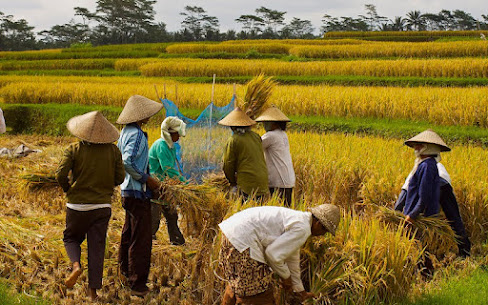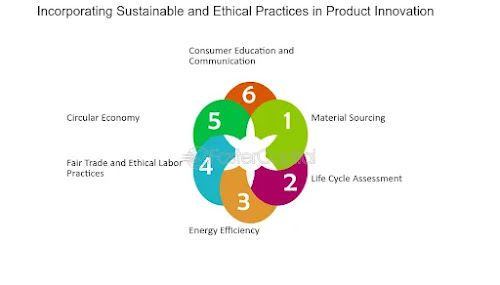Introduction
2. From Homestead to Fork: The Excursion of Our Food
Introduction
Welcome to "From Farm to Fork: The Journey of Our Food," where we delve into the fascinating process of how food travels from the fields and farms to our tables. Understanding this journey not only deepens our appreciation for the meals we enjoy but also highlights the importance of sustainable and ethical food practices. Join us as we explore the various stages of food production, from cultivation and harvesting to processing, distribution, and finally, consumption.
Cultivation: The Birth of Our Food
The journey of our food begins with cultivation, where farmers plant and nurture crops, or raise livestock. This stage involves:
Soil Preparation: The quality of soil is crucial for healthy crop growth. Farmers use various techniques like crop rotation, composting, and cover cropping to maintain soil fertility.
Planting: Seeds are sown in prepared fields. Depending on the crop, planting can be done manually or with the help of machinery.
Irrigation: Providing adequate water is essential for crop growth. Modern irrigation techniques, such as drip irrigation, help conserve water while ensuring that plants receive the moisture they need.
Pest and Weed Control: Farmers use a combination of natural and chemical methods to protect crops from pests and weeds. Integrated Pest Management (IPM) is an approach that minimizes the use of harmful pesticides.
Harvesting: Bringing in the Bounty
Once crops are fully grown or livestock has reached maturity, it's time for harvesting. This stage involves:
Timing: Harvesting at the right time is critical to ensure optimal flavor, nutrition, and shelf life. For example, fruits are often picked when they are ripe but still firm to withstand transportation.
Techniques: Harvesting methods vary depending on the type of crop. Some crops are harvested by hand, while others are collected using machinery.
Post-Harvest Handling: After harvesting, crops are cleaned, sorted, and stored to maintain their quality. Legitimate capacity conditions, for example, temperature and mugginess control, are fundamental to forestall decay.
Processing: Transforming Raw Ingredients
Once harvested, many foods undergo processing to transform raw ingredients into products ready for consumption. This stage includes:
Cleaning and Sorting: Raw produce is thoroughly cleaned and sorted to remove any dirt, debris, or damaged items.
Preservation: Various preservation methods, such as canning, freezing, drying, and fermenting, are used to extend the shelf life of food.
Packaging: Processed foods are packaged to protect them from contamination and damage. Bundling additionally gives significant data, for example, wholesome substance and lapse dates.
Distribution: From Producers to Consumers
The distribution stage involves transporting food from producers to consumers. Key aspects include:
Transportation: Food is transported using various modes, such as trucks, ships, and airplanes. Maintaining the cold chain is vital for perishable items to prevent spoilage.
Supply Chain Management: Efficient supply chain management ensures that food reaches consumers in a timely manner. This involves coordinating with multiple stakeholders, including farmers, processors, distributors, and retailers.
Food Safety Regulations: Compliance with food safety regulations is essential to ensure that food is safe for consumption. This includes adhering to standards for hygiene, labeling, and traceability.
Consumption: Enjoying the Fruits of Labor
The final stage of the food journey is consumption. Here, we focus on:
Food Preparation: Cooking methods, such as grilling, baking, steaming, and sautéing, enhance the flavor and nutritional value of food. Home cooking and dining out both play significant roles in our food culture.
Mindful Eating: Understanding where our food comes from encourages mindful eating. This involves making conscious choices about what we eat, considering factors like nutrition, sustainability, and ethical sourcing.
Reducing Food Waste: Being aware of food waste and taking steps to minimize it is crucial for a sustainable food system. Simple actions like meal planning, proper storage, and composting can make a significant difference.
The Importance of Sustainability and Ethical Practices
As we follow the journey of our food, it’s important to recognize the impact of our food choices on the environment and society. Sustainable and ethical practices include:
Organic Farming: Organic farming avoids the use of synthetic pesticides and fertilizers, promoting a healthier ecosystem.
Fair Trade: Fair trade practices ensure that farmers and workers receive fair wages and work under safe conditions.
Local and Seasonal Eating: Choosing locally grown and seasonal produce reduces the carbon footprint associated with transportation and supports local economies.
Conclusion
Understanding the journey of our food from farm to fork fosters a deeper connection to what we eat and emphasizes the importance of making informed and responsible choices. By appreciating the efforts of farmers, processors, and distributors, we can support a sustainable and ethical food system that benefits both people and the planet. Join us in celebrating the incredible journey of our food and discovering ways to contribute to a healthier, more sustainable future. Bon appétit!















.jpg)


0 Comments